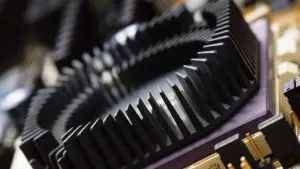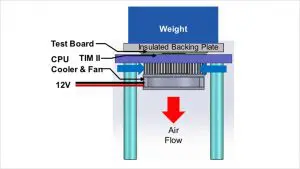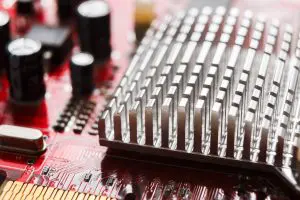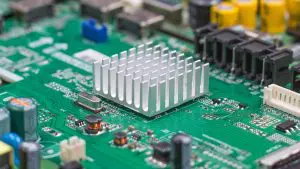Thermal analysis tools available to engineers and scientists offer a wide variety of methods to solve problems. A cursory review of the past decade’s issues of Electronics Cooling magazine can show methods ranging from analytical techniques (such as hand calculations) to spreadsheets to full numerical/computational solutions such as CFD (Computational Fluid Dynamics) and FEA … [Read more...]
Developing a Thetajc Standard Under Steady-State Testing Conditions
ABSTRACT Testing standards provide a common framework for collecting and reporting data. Without a clearly defined testing standard, it is impossible to compare experimental data measured by different labs since differing test conditions may mask the very effect being tested. For this reason, a Thetajc standard is needed to specify testing conditions that allow for an … [Read more...]
Use of the Monte Carlo Method in Packaging Thermal Calculations
INTRODUCTION The state of the art in performing thermal calculations in our industry is very advanced. However, how applicable the results of a calculation are to the real-world performance of a packaging or an active cooling component depends on the quality of the data characterizing these various components. In the real world of manufacturing, such characterization … [Read more...]
Beat the Heat in 3D Chip Stacks with Embedded Cooling
by: Pritish R. Parida, Mark Schultz & Timothy Chainer J. Watson Research Center, Yorktown Heights NY, USA INTRODUCTION In the Moore’s Law race to keep improving computer performance, the IT industry has turned upward, stacking chips like nano-sized 3D skyscrapers. But those stacks, like the law they’re challenging, have their limits, due to overheating. A solution … [Read more...]
SEMI-THERM 34: The Most Comprehensive Symposium Addressing Thermal Challenges of Consumer Design, Electronics Components, and Data Centers to Take Place March 19-23, 2018
THE 34TH ANNUAL CONFERENCE AND EXHIBITION WILL BRING TOGETHER LEADING INDUSTRY EXPERTS IN SAN JOSE, CA TO SHARE IDEAS THAT WILL SHAPE FUTURE TECHNOLOGIES San Jose, CA, USA – March 08, 2018: The SEMI-THERM Educational Foundation (STEF) proudly announces that the 34th Annual Thermal Measurement, Modeling and Management Symposium will take place from Monday, March 19th to … [Read more...]
- « Previous Page
- 1
- …
- 21
- 22
- 23
- 24
- 25
- …
- 32
- Next Page »










